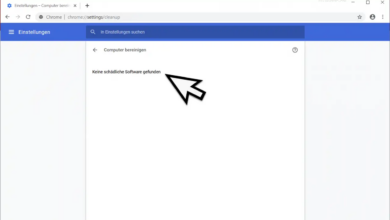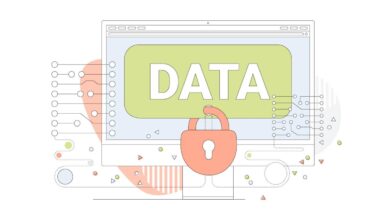
8 Key Tips for Data Center Security
8 Key Tips for Data Center Security: In today’s hyper-connected world, data centers are the beating heart of countless businesses. But this critical infrastructure is constantly under threat from a variety of sophisticated attacks. Protecting your data center isn’t just about firewalls and passwords; it’s about a holistic approach encompassing physical security, network defenses, robust data encryption, and a well-trained team.
This guide delves into eight crucial strategies to fortify your data center and safeguard your valuable information.
We’ll explore practical steps to implement stringent access controls, secure your network against intrusions, and establish comprehensive data protection measures. Learn how to leverage the power of encryption, implement effective monitoring and logging systems, and create a resilient incident response plan. By understanding and implementing these key tips, you can significantly reduce your risk exposure and ensure the continued operation of your critical data center infrastructure.
Physical Security
Data center physical security is the first line of defense against a wide range of threats, from opportunistic theft to sophisticated attacks aimed at disrupting operations or stealing valuable data. A robust physical security strategy is paramount, not just for protecting hardware but also for ensuring business continuity and maintaining data integrity. Neglecting physical security can lead to significant financial losses, reputational damage, and legal repercussions.Physical security threats to data centers are diverse and constantly evolving.
These threats range from simple unauthorized access attempts by opportunistic individuals to more sophisticated attacks involving insider threats, sabotage, and even physical destruction. Common threats include theft of equipment, vandalism, unauthorized entry, power outages, natural disasters (fire, flood, earthquake), and environmental hazards (extreme temperatures). These threats can cause significant disruptions, data breaches, and financial losses.
Access Control Systems
Implementing robust access control systems is crucial for limiting physical access to sensitive areas within a data center. This involves employing multiple layers of security, such as biometric authentication (fingerprint, iris, facial recognition) and keycard systems, limiting access based on roles and responsibilities. Multi-factor authentication, combining several methods for verification, significantly strengthens security. For instance, a data center employee might need a keycard, a PIN, and biometric verification to enter a server room.
This layered approach minimizes the risk of unauthorized access, even if one security layer is compromised.
Visitor Management and Security Personnel Training
A well-defined visitor management procedure is essential. This includes a formal check-in and check-out process, visitor escort requirements, and monitoring of visitor activity within the facility. Thorough background checks for contractors and vendors should be conducted. Regular security audits and vulnerability assessments help identify and address potential weaknesses.Security personnel training is critical. Guards should receive comprehensive training in identifying and responding to security threats, handling emergencies, and using security equipment effectively.
Regular drills and simulations prepare them for real-world scenarios, ensuring they can react swiftly and appropriately in the event of an incident. This training should also cover procedures for dealing with intruders, managing emergencies, and collaborating with law enforcement.
Comparison of Physical Security Technologies
The following table compares different physical security technologies commonly used in data centers:
| Technology | Description | Advantages | Disadvantages |
|---|---|---|---|
| CCTV (Closed-Circuit Television) | Video surveillance system with cameras monitoring various areas. | Provides visual record of activity, acts as deterrent. | Requires significant storage space, can be bypassed with sophisticated techniques. |
| Intrusion Detection Systems (IDS) | Sensors detect unauthorized entry attempts, triggering alarms. | Early warning system, can deter intruders. | Can generate false alarms, requires regular maintenance. |
| Access Control Systems (ACS) | Keycard readers, biometric scanners control access to restricted areas. | Limits access to authorized personnel, provides audit trail. | Can be expensive to implement, requires regular maintenance. |
| Environmental Monitoring Systems | Sensors monitor temperature, humidity, power, and other environmental factors. | Ensures optimal operating conditions, prevents equipment damage. | Requires regular calibration and maintenance. |
Network Security

Network security forms the backbone of a robust data center defense strategy. A compromised network can lead to data breaches, service disruptions, and significant financial losses. Implementing strong network security measures is crucial to protect sensitive data and maintain business continuity. This section will delve into key aspects of securing your data center’s network infrastructure.
Firewalls and Intrusion Prevention Systems
Firewalls act as the first line of defense, filtering network traffic based on pre-defined rules. They inspect incoming and outgoing packets, blocking malicious traffic and preventing unauthorized access. Intrusion prevention systems (IPS) go a step further by analyzing network traffic for malicious patterns and actively blocking or mitigating threats in real-time. Effective deployment involves strategically placing firewalls at network entry points and integrating IPS for deeper threat detection and response.
For example, a firewall could be configured to block all incoming connections from known malicious IP addresses, while an IPS could detect and block attempts to exploit known vulnerabilities in server software.
Virtual Private Networks (VPNs) for Secure Remote Access
VPNs create secure, encrypted connections between remote users and the data center network. This allows authorized personnel to access internal resources securely, even when working remotely. Implementing and managing VPNs involves selecting a robust VPN solution, establishing strong authentication mechanisms (such as multi-factor authentication), and regularly updating VPN software and configurations. For example, using a VPN with strong encryption (like AES-256) ensures that even if the connection is intercepted, the data remains unreadable.
Regular audits of VPN access logs are crucial for maintaining security and identifying potential unauthorized access attempts.
Network Segmentation
Network segmentation involves dividing the data center network into smaller, isolated segments. This limits the impact of a security breach by containing it within a specific segment. A step-by-step guide to configuring network segmentation could involve: 1) Identifying critical systems and applications that need isolation. 2) Creating separate VLANs (Virtual LANs) for each segment. 3) Configuring firewalls or routers to control traffic flow between segments.
4) Implementing access control lists (ACLs) to restrict access to specific resources. 5) Regularly reviewing and updating the segmentation strategy based on evolving needs and threat landscape. For instance, a company might segment its network to isolate the database servers from the web servers, limiting the potential damage from a web server compromise.
Securing Wireless Networks
While wireless networks are often less common in the core data center, they can be used for administrative access or supporting peripheral devices. Securing these networks requires implementing strong encryption protocols (such as WPA2 or WPA3), using strong passwords, and enabling features like MAC address filtering to restrict access to authorized devices. Regular security audits and updates to wireless access points’ firmware are essential to address vulnerabilities.
For example, disabling WPS (Wi-Fi Protected Setup) reduces the risk of unauthorized access through brute-force attacks. Implementing a robust authentication system, including multi-factor authentication, adds an additional layer of security.
Data Security and Encryption: 8 Key Tips For Data Center Security
Protecting your data within the data center is paramount. This involves implementing robust data loss prevention strategies, employing strong encryption methods, and establishing a reliable backup and recovery plan. Neglecting these crucial aspects can lead to significant financial losses, reputational damage, and legal repercussions. Let’s delve into the specifics.
Data Loss Prevention (DLP) Strategies
Effective DLP strategies are multifaceted and require a layered approach. This involves identifying sensitive data, monitoring its movement, and implementing controls to prevent unauthorized access or exfiltration. Key components include implementing access control lists (ACLs) to restrict access to sensitive data based on user roles and permissions. Regular security audits and vulnerability scans are crucial to identify and remediate weaknesses.
Employee training plays a vital role in reinforcing data security awareness and best practices, minimizing the risk of human error. Finally, advanced threat detection systems can monitor network traffic for suspicious activity, alerting security personnel to potential data breaches in real-time. A well-defined incident response plan is crucial for mitigating the impact of a data breach should one occur.
Data Encryption Methods, 8 key tips for data center security
Various encryption methods exist, each suited to different data types and security needs. Symmetric encryption, like AES (Advanced Encryption Standard), uses the same key for encryption and decryption, offering high speed but requiring secure key exchange. Asymmetric encryption, such as RSA (Rivest-Shamir-Adleman), uses separate keys for encryption and decryption, offering stronger key management but being slower. Hybrid approaches combine the strengths of both, using symmetric encryption for speed and asymmetric encryption for key exchange.
For example, AES might encrypt the data itself, while RSA encrypts the AES key. The choice depends on the sensitivity of the data and the performance requirements. Consider using encryption at rest (for data stored on servers and storage devices) and encryption in transit (for data transmitted over networks).
Implementing and Managing Data Encryption Keys
Secure key management is critical for the effectiveness of data encryption. Keys should be stored securely, using hardware security modules (HSMs) or dedicated key management systems. Access to keys should be strictly controlled, adhering to the principle of least privilege. Regular key rotation is essential to minimize the impact of potential compromises. Key lifecycle management involves defining procedures for key generation, storage, use, rotation, and destruction.
Robust auditing mechanisms should track all key activities, providing an audit trail for compliance and security investigations. For example, a key rotation policy might mandate changing encryption keys every 90 days.
Data Backup and Recovery Plan
A comprehensive data backup and recovery plan is crucial for business continuity. This involves regular backups of critical data, stored both on-site and off-site. Off-site storage provides redundancy in case of natural disasters or physical damage to the data center. The plan should detail the backup frequency, retention policies, and recovery procedures. Regular testing of the backup and recovery process is vital to ensure its effectiveness.
Disaster recovery procedures should Artikel steps to restore data and systems in the event of a major disruption. This might include failover to a secondary data center or the use of cloud-based disaster recovery services. The plan should address potential recovery time objectives (RTOs) and recovery point objectives (RPOs) to define acceptable downtime and data loss. For instance, an RTO of 4 hours and an RPO of 24 hours might be suitable for a specific application.
Server and Application Security
Securing your servers and applications is paramount in a data center environment. A breach at this level can expose sensitive data, disrupt operations, and lead to significant financial losses. This section focuses on identifying and mitigating common vulnerabilities to ensure robust server and application security. We’ll cover key strategies for bolstering your defenses.Protecting your servers and applications requires a multi-layered approach.
This includes understanding common vulnerabilities, implementing regular patching and scanning, configuring secure server settings, and establishing robust database and application security practices. Failing to address these aspects leaves your data center vulnerable to attack.
Common Server and Application Vulnerabilities
Server operating systems and applications are constantly targeted by malicious actors. Common vulnerabilities include outdated software, misconfigured security settings, insecure coding practices, and known exploits within applications. For example, unpatched web servers are susceptible to attacks exploiting known vulnerabilities like cross-site scripting (XSS) or SQL injection. Similarly, weak passwords or default credentials on applications can provide easy entry points for attackers.
Understanding these vulnerabilities is the first step towards mitigating them.
Regular Patching and Vulnerability Scanning
Regular patching and vulnerability scanning are crucial for maintaining a secure server environment. Patches address known vulnerabilities, preventing attackers from exploiting them. Vulnerability scanning tools automatically identify weaknesses in your systems, providing a comprehensive overview of your security posture. A proactive patching schedule, coupled with regular scans, significantly reduces the attack surface and minimizes the risk of compromise.
For instance, a company failing to patch a known vulnerability in their web server could experience a data breach, resulting in significant financial penalties and reputational damage.
Secure Server Configuration
Secure server settings are critical for minimizing attack vectors. Disabling unnecessary services reduces the potential points of entry for attackers. This includes services that aren’t essential for the server’s functionality, such as remote administration tools that aren’t actively monitored. Implementing strong authentication mechanisms, such as multi-factor authentication, adds another layer of security. Furthermore, regularly reviewing and updating firewall rules to allow only necessary network traffic further enhances security.
For example, disabling the FTP service on a web server removes a common entry point for attackers who might attempt to exploit vulnerabilities in the FTP daemon.
Securing Databases and Sensitive Applications
Securing databases and sensitive applications requires a combination of technical and procedural measures. This includes employing strong encryption for data at rest and in transit, implementing access control lists (ACLs) to restrict access to sensitive data, and regularly auditing database activity to detect and respond to suspicious behavior. Regular backups are essential for data recovery in the event of a breach or disaster.
Furthermore, implementing robust input validation within applications can prevent SQL injection attacks. For example, encrypting customer payment information stored in a database protects it from unauthorized access, even if the database itself is compromised.
User and Access Management
Robust user and access management is the cornerstone of a secure data center. It’s about controlling who can access what resources, and ensuring that access is granted only when necessary and revoked promptly when no longer required. This involves implementing strong authentication mechanisms, adhering to the principle of least privilege, and carefully managing the lifecycle of user accounts.
Neglecting this area leaves your data center vulnerable to unauthorized access and potential breaches.Implementing effective user and access management requires a multi-faceted approach. This includes establishing strong password policies, implementing multi-factor authentication, enforcing the principle of least privilege, and diligently managing the lifecycle of user accounts. Regular security awareness training for all personnel further reinforces these security measures.
Strong Password Policies and Multi-Factor Authentication
Strong password policies are essential for preventing unauthorized access. These policies should mandate passwords of sufficient length (at least 12 characters), complexity (including uppercase and lowercase letters, numbers, and symbols), and regular changes (every 90 days, for example). Password complexity requirements should be carefully balanced against user frustration; overly strict policies can lead to users choosing easily guessable passwords or writing them down.
Beyond strong passwords, multi-factor authentication (MFA) adds an extra layer of security. MFA requires users to provide two or more forms of authentication, such as a password and a one-time code from a mobile authenticator app, significantly reducing the risk of unauthorized access even if a password is compromised. Implementing MFA across all systems and services is a highly recommended practice.
Least Privilege Access Control
The principle of least privilege dictates that users should only be granted the minimum level of access necessary to perform their job functions. This significantly limits the potential damage from a compromised account. For example, a network administrator might need access to network devices but shouldn’t require access to sensitive customer data. Implementing least privilege requires careful role-based access control (RBAC) configuration, regularly reviewing and updating user permissions, and employing tools that allow for granular control over access rights.
This proactive approach minimizes the attack surface and limits the impact of potential security breaches.
User Account Lifecycle Management
Effective user account lifecycle management involves a structured process for creating, managing, and terminating user accounts. This includes a standardized procedure for provisioning new accounts with appropriate permissions, regularly reviewing and updating permissions as job roles change, and promptly disabling or deleting accounts when employees leave the organization. Automated processes can streamline this, reducing manual effort and minimizing the risk of human error.
Regular audits of user accounts help identify inactive or unnecessary accounts, improving security and compliance. A well-defined process ensures that only authorized individuals have access to sensitive data, minimizing risks.
Security Awareness Training
Regular security awareness training is crucial for educating data center personnel about security best practices and potential threats. This training should cover topics such as strong password creation, phishing awareness, recognizing social engineering attempts, and understanding the importance of following security policies. Training should be interactive and engaging, incorporating real-world examples and scenarios to reinforce learning. Regular refresher courses and simulated phishing exercises can keep employees vigilant and better equipped to identify and report security incidents.
A culture of security awareness, fostered through consistent training, is vital to maintaining a secure data center environment.
Monitoring and Logging
Effective monitoring and logging are the bedrock of a robust data center security strategy. They provide the crucial visibility needed to detect, understand, and respond to security threats in real-time, preventing potential breaches and minimizing damage. Without a comprehensive monitoring and logging system, your data center is essentially operating blind, leaving it vulnerable to exploitation.Real-time security information and event management (SIEM) systems are indispensable for modern data center security.
A SIEM aggregates security data from various sources – network devices, servers, applications, and security tools – into a centralized dashboard. This consolidated view allows security analysts to identify patterns, anomalies, and potential threats that might go unnoticed if examining individual logs. The ability to correlate events across different systems is key to detecting sophisticated attacks that might involve multiple stages or vectors.
For example, a SIEM could detect a series of failed login attempts from an unusual IP address, followed by suspicious network traffic originating from the same IP address, indicating a potential intrusion attempt. This integrated view allows for faster response times and more effective incident management.
SIEM Implementation and Management
Implementing a SIEM involves careful planning and execution. First, identify the critical data sources that need to be monitored. This might include firewalls, intrusion detection systems (IDS), antivirus software, and database servers. Next, select a SIEM solution that meets your specific needs and integrates seamlessly with your existing infrastructure. Consider factors like scalability, ease of use, reporting capabilities, and the level of customization offered.
Deployment will involve configuring the SIEM to collect and process data from the identified sources. This includes defining the types of events to monitor, setting thresholds for alerts, and configuring correlation rules. Ongoing management includes regularly updating the SIEM software, tuning alert thresholds, and reviewing security logs to refine monitoring strategies based on observed threats and trends. Regular testing and validation are also crucial to ensure the system is functioning correctly and detecting potential threats effectively.
Security Log Analysis and Threat Response
Analyzing security logs is a critical task for identifying and responding to security threats. Security analysts use various techniques to sift through vast amounts of log data, including automated threat detection using machine learning algorithms, and manual analysis using log management tools that provide filtering, searching, and visualization capabilities. The analysis process involves identifying suspicious patterns, such as unusual login attempts, unauthorized access attempts, data exfiltration, and malware activity.
Once a threat is identified, the response process involves containing the threat, eradicating the malware or intruder, and restoring the system to a secure state. This often involves coordinating with other teams, such as incident response and network operations, to implement remediation strategies and prevent future attacks. Post-incident analysis is essential to learn from the experience and improve future security measures.
Documentation of the incident, including the root cause, impact, and remediation steps, is critical for continuous improvement.
Security Audit Trail Generation and Storage
A well-designed system for generating and storing security audit trails is crucial for compliance, forensic investigations, and accountability. Audit trails record all significant security-related events, providing a detailed history of user activity, system changes, and security events. This information is invaluable for identifying security breaches, investigating incidents, and ensuring compliance with industry regulations and internal policies. The system should capture data such as user logins and logouts, access attempts, file modifications, and system configuration changes.
Audit trails should be stored securely, preferably in a tamper-proof manner, and retained for a sufficient period to meet regulatory and business requirements. Regular reviews of audit trails can help identify potential security weaknesses and improve overall security posture. Implementing a robust audit trail system requires careful planning and consideration of factors such as storage capacity, data retention policies, and security measures to protect the integrity of the audit trail itself.
Incident Response Planning

A robust incident response plan is the cornerstone of a secure data center. Without a well-defined and regularly tested plan, even the most sophisticated security measures can be rendered ineffective when a breach occurs. A comprehensive plan minimizes downtime, reduces data loss, and helps maintain the trust of clients and stakeholders. This involves proactive planning, regular testing, and clear communication protocols.
Incident Response Plan Steps
An effective incident response plan follows a structured approach. Each stage is critical to minimizing the impact of a security incident. A typical plan includes detection, containment, eradication, recovery, and post-incident activity. Failing to address any one of these stages can significantly increase the severity and longevity of the incident.
So, you’re diving into data center security with those 8 key tips – crucial stuff! But robust security also needs to consider application development, and that’s where understanding the evolving landscape of application building comes in, like what’s discussed in this insightful article on domino app dev the low code and pro code future. Ultimately, secure app development is a key component of a strong data center security strategy.
Back to those 8 tips – let’s ensure our applications are just as secure as our physical infrastructure!
- Detection: This involves establishing robust monitoring systems that can identify suspicious activity. This could include intrusion detection systems (IDS), security information and event management (SIEM) tools, and regular security audits. Early detection is crucial to limiting the damage caused by a breach.
- Containment: Once an incident is detected, the immediate priority is to contain it. This may involve isolating affected systems from the network, blocking malicious IP addresses, or disabling compromised accounts. The goal is to prevent the incident from spreading.
- Eradication: This stage focuses on removing the root cause of the incident. This might involve removing malware, patching vulnerabilities, or restoring systems from backups. Thorough eradication is essential to prevent recurrence.
- Recovery: After the threat is eliminated, systems and data need to be restored to their operational state. This may involve restoring data from backups, reinstalling software, and verifying system integrity. A well-defined recovery process minimizes downtime.
- Post-Incident Activity: This final stage involves analyzing the incident to identify weaknesses in security controls. Lessons learned are documented and used to improve future security measures. This is a crucial step in building a more resilient security posture.
Incident Response Drills and Simulations
Regular incident response drills and simulations are vital for validating the effectiveness of the plan and training personnel. These exercises should mimic real-world scenarios, testing the team’s ability to respond effectively under pressure. Simulations help identify weaknesses in the plan and improve coordination among team members. For example, a simulated ransomware attack can reveal gaps in backup procedures or the effectiveness of data recovery strategies.
A realistic drill involving a phishing email could highlight vulnerabilities in employee training programs.
Communication and Collaboration During a Security Incident
Effective communication and collaboration are crucial throughout the incident response process. Clear communication channels need to be established between the incident response team, IT staff, management, and potentially external parties such as law enforcement or legal counsel. A well-defined communication plan ensures everyone is informed and coordinated. For instance, a dedicated communication channel (e.g., a secure chat application) can ensure rapid information sharing during a crisis.
Examples of Security Incidents and Their Potential Impact
Different types of security incidents have varying impacts. A denial-of-service (DoS) attack can disrupt service availability, while a data breach can lead to significant financial losses and reputational damage. Malware infections can compromise sensitive data and systems. Phishing attacks can compromise user credentials, leading to further breaches. The impact of an incident depends on factors like the type of incident, the speed of detection and response, and the effectiveness of security measures.
For example, a successful ransomware attack on a hospital could delay critical medical care, while a data breach at a financial institution could result in significant financial losses and legal repercussions.
Compliance and Auditing
Data center security isn’t just about firewalls and intrusion detection systems; it’s also about adhering to legal and industry standards. Compliance and regular auditing are crucial for maintaining a secure and trustworthy environment, protecting your organization from hefty fines and reputational damage. Failing to comply can lead to significant financial penalties, legal battles, and a loss of customer trust.
This final piece of the data center security puzzle is arguably the most important, as it provides a framework for all the other security measures.Regular audits and assessments provide a systematic way to identify vulnerabilities and ensure your security posture aligns with best practices and regulatory requirements. By proactively addressing potential weaknesses, you can minimize your risk profile and maintain a robust security infrastructure.
Relevant Regulations and Compliance Standards
Various industry regulations and compliance standards dictate data center security practices depending on the type of data handled. For example, the Health Insurance Portability and Accountability Act (HIPAA) governs the protection of Protected Health Information (PHI) in the healthcare industry. The Payment Card Industry Data Security Standard (PCI DSS) mandates specific security controls for organizations that process, store, or transmit credit card information.
Other relevant standards include ISO 27001 (information security management systems), NIST Cybersecurity Framework, and GDPR (General Data Protection Regulation). Understanding which regulations apply to your specific organization and the data you handle is the first critical step.
Implementing Compliance Policies and Procedures
Once you’ve identified the relevant regulations, you need to translate them into actionable policies and procedures. This involves creating detailed documentation outlining how your organization will meet each compliance requirement. This might include policies on data access control, incident response, employee training, and regular security assessments. These policies should be clearly communicated to all employees, and regular training sessions should be conducted to ensure everyone understands their responsibilities.
Furthermore, these policies should be regularly reviewed and updated to reflect changes in regulations and best practices. For example, a policy on password management might specify minimum password length, complexity requirements, and regular password changes.
Conducting Security Audits and Assessments
Regular security audits and assessments are essential for verifying the effectiveness of your security controls and identifying any gaps in your compliance posture. These audits can be internal, conducted by your own security team, or external, performed by third-party security experts. Internal audits provide a continuous monitoring mechanism, allowing for the identification and rectification of minor issues before they escalate.
External audits offer an independent and objective evaluation of your security controls, providing a more comprehensive assessment of your overall security posture. The process typically involves vulnerability scanning, penetration testing, and a review of security policies and procedures. Findings from these audits should be documented and addressed promptly with a remediation plan.
Checklist for Ongoing Compliance
Maintaining ongoing compliance requires a proactive approach. A comprehensive checklist can help ensure that all necessary steps are taken. This checklist should include regular tasks such as:
- Review and update security policies and procedures.
- Conduct vulnerability scans and penetration testing.
- Perform regular security awareness training for employees.
- Monitor security logs and alerts.
- Review access control lists and permissions.
- Update security software and patches.
- Conduct regular backups and disaster recovery drills.
- Maintain detailed documentation of security controls and procedures.
This checklist should be tailored to your specific organization’s needs and the regulations you must comply with. It should be regularly reviewed and updated to reflect changes in your environment and regulatory requirements. Regular review ensures the checklist remains relevant and effective in maintaining your organization’s compliance.
Closing Summary
Securing your data center is an ongoing process, not a one-time fix. By consistently reviewing and updating your security protocols, investing in the latest technologies, and fostering a culture of security awareness among your team, you can significantly minimize vulnerabilities and protect your valuable assets. Remember, a proactive and layered approach is key to ensuring the long-term security and resilience of your data center.
Don’t wait for a breach—start implementing these key strategies today!
Query Resolution
What is the most important aspect of data center security?
There’s no single “most important” aspect, as a layered security approach is crucial. However, a strong foundation in physical security and access control is paramount, as it’s the first line of defense against many threats.
How often should security audits be conducted?
The frequency of security audits depends on factors like industry regulations and the sensitivity of your data. However, at minimum, annual audits are recommended, with more frequent checks (e.g., quarterly or even monthly) for high-risk environments.
What are some common physical security threats?
Common threats include unauthorized physical access, theft of equipment, sabotage, environmental disasters (fire, flood), and power outages.
How can I ensure my employees are security-conscious?
Regular security awareness training, clear security policies, and consistent enforcement are key. Include phishing simulations and other practical exercises to reinforce learning.





